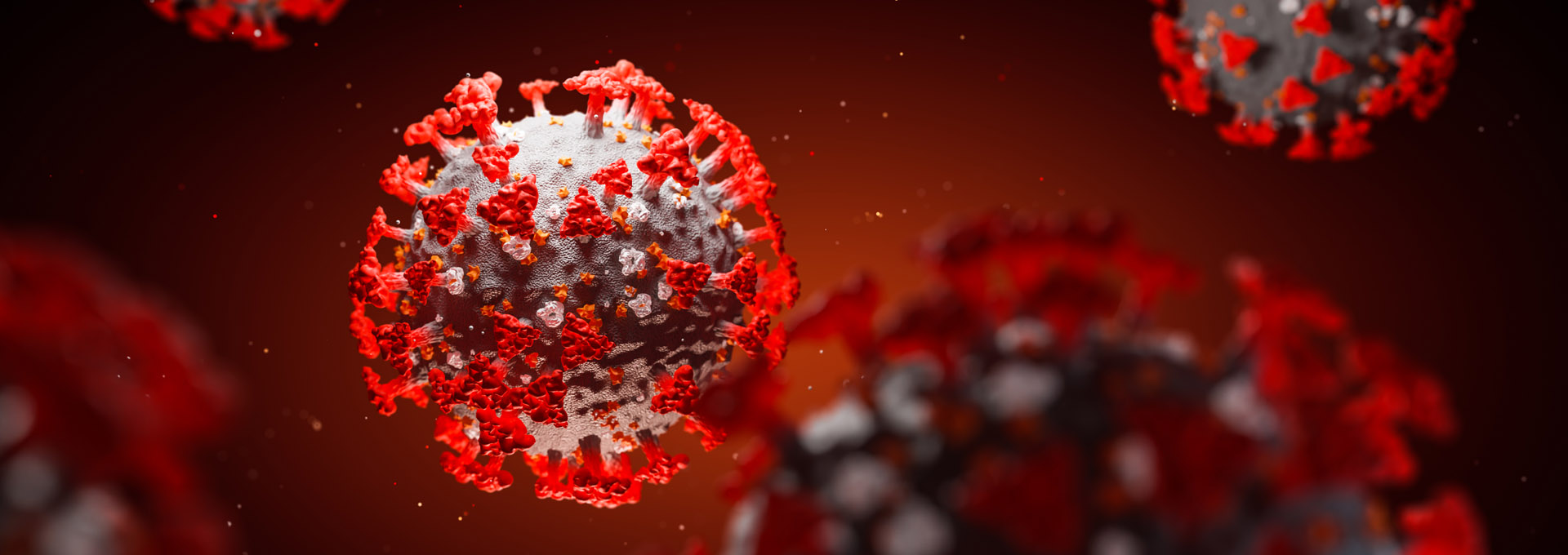The Role of Current GMPs in COVID-19 Vaccine Production

The speed that COVID-19 vaccines have been developed, moved through large-scale clinical trials, and are scheduled for Emergency Use Authorization review is remarkable and is a measure of our past investment in biological sciences and the strength of the biotechnology and pharmaceutical industries.
To students of the history of the pharmaceutical industry, it can be compared to the World War II development of the antibiotic penicillin (Hobby, 1985). Many believe that the U.S. federal government wartime investment in penicillin jump-started the pharmaceutical industry. Likewise, we expect that the response to the COVID-19 pandemic will have lasting benefits to vaccinology.
The critical elements to ensure the safety and effectiveness of a new vaccine are:
- The experience with the underlying technology associated with the vaccine
- Clinical trials to demonstrate its safety and efficacy
- GMP controlled manufacturing processes
- Product release testing
- vaccine distribution and administration
- Post-approval safety surveillance.
As the membership of PDA is most involved in the product manufacturing and testing phases (elements 3 and 4) in biopharmaceutical industry, this brief article will emphasize these often-downplayed critical elements in successful vaccine production.
Historic Past Missteps
The urgency to bring COVID-19 vaccines to the global market is not without some potential risk. Readers should be reminded of the so-called 1955 Cutter incident, when multiple batches of the newly introduced polio vaccine had a flawed viral inactivation step and hundred of children were infected by the vaccine and some children died (Offit, 2005).
Why is this type of event unlikely today?
Much scientific and regulatory improvements have happened in the sixty-five years since this incident including reorganization of the responsibilities for the approval and release of vaccines within the FDA Center for Biological Evaluation and Research (CBER), the implementation of the GMP regulations, and the advances of the state-of-the-art in biological manufacturing. These improvements will mitigate risk and will assure the public the huge benefits of the vaccines outweigh the potential risk.
Key Elements for Vaccine Safety and Effectiveness
Keys in the development, manufacturing, and marketing of the first generation of COVID-19 vaccines are product design, process development and validation, physicochemical stability, aseptic processing, container-closure integrity, release testing, and controlled product distribution. The broad diversity of technologies employed, i.e., mRNA, replicating and non-replicating viral vector, inactivated virus, attenuated virus and subunit protein vaccines (Schlake et al, 2012; Yong et al. 2020), only allows for a general discussion of the key issues.
FDA Guidance
A good starting point for this discussion is the October 2020 FDA Guidance for Industry Emergency Use Authorization for Vaccines to Prevent COVID-19, which require that a vaccine submission should include information on chemistry, manufacturing, and controls (CMC), a list of each site where the product, if authorized, is or would be manufactured, relevant information about each site, and the current status of the manufacturing site(s) with respect to CGMP requirements.
The safeguards that would be expected to be in place for the manufacturing, release testing, storage, and shipping of a COVID-19 vaccine include the following:
- FDA establishment licensing
- Submission of the details on how the vaccine is made, packaged, tested and release for distribution in the CMC section of the Emergency Use Authorization (EUA) and/or Biological Licensing Application (BLA) request for a vaccine
- Evidence of compliance with Federal Current Good Manufacturing Practices (CGMPs)
- Details of the manufacture and testing of three Process Performance Qualification (PPQ) lots of the vaccine per manufacturing facility to support the consistency of vaccine quality.
- Validation of critical vaccine manufacturing steps, e.g., virus inactivation, sterile filtration, aseptic filling and container-closure integrity.
- A history of satisfactory FDA GMP compliance inspections of the manufacturing site or for a new site a pre-approval inspection.
- Stability testing of long-term storage and distribution of the vaccine with special emphasis on maintenance of subzero storage and shipping temperatures and the time that vaccine may be held at refrigeration and room temperature at the administration locations.
Jerry Weir, PhD, Director, CBER Division of Viral Products, Office of Vaccines Research and Review gave the FDA position in a presentation entitled “Licensure and Emergency Use Authorization of Vaccines to Prevent COVID-19: Chemistry, Manufacturing, and Controls (CMC) Considerations” at the Oct. 22, 2020 FDA Vaccines and Related Biological Products Advisory Committee meeting. He summarized his presentation by stating the following:
- A manufacturing process that ensures product quality and consistency is necessary, whether a vaccine is considered for licensure or for use under EUA
- CMC expectations will be the same for all COVID-19 vaccines, but the manufacturing and control data are unique for each product and production process
- Confidence and reproducibility of safety and efficacy results from pivotal clinical trials depends on the establishment and maintenance of high standards of vaccine quality control and manufacturing.
Although this message was very re-assuring, the postponement of the completion of all the tasks expected for product licensure for a EUA based on the FDA discretion and the absence of pre-approval inspections is notable. Because we are in a pandemic, the FDA plans to rely more on the EUA submission document review and the past histories of regulatory inspection, which is appropriate based on the current challenges. However, risk-based pre-EUA inspections may be scheduled when the FDA inspectorate is vaccinated and the pandemic recedes.
Specific Challenges with the Accelerated Approval of COVID-19 Vaccines
There may be different risks associated with different vaccine types but all candidate vaccines will be judged the same, to achieve a level playing field. Is this reasonable? For example no mRNA vaccine has ever been developed and approved while live attenuated and inactivated viral vaccines are very common. Should this type of vaccine be held to a higher standard for approval as would be recommended by most risk management systems? The author believes that the vaccine manufacturers, vaccine advisory committee members and the CBER professional staff all recognize that different risks may be associated with vaccine types and will factor them into their decision-making mitigating risk. Specific challenges in the manufacturing processes that come to mind include large-scale cell-based virus production (live attenuated and inactivated virus vaccines), viral inactivation steps (inactivated virus vaccines), large-scale protein purification (subunit protein vaccines), container-closure integrity at ultra-low temperature storage (mRNA vaccines), and liposome formation and stability (mRNA vaccines). These challenges are all manageable.
Thoughts on Vaccination
Relatives, friends, and colleagues ask me, all the time, whether I will take the vaccine.
The answer is, “yes, when it is available to my priority group.”
It is a truism that the availability of vaccines will do no good in taming this pandemic, unless the majority of people are vaccinated. Clinical trials are randomized, blinded, double-arm studies where the vaccine safety and efficacy is compared to a placebo. Reports that the first two mRNA vaccines, after 2 months that 50% of the recipients have taken the second dose, were 95% effective and had no confirmed (or product related) safety issues in diverse recipient populations exceeding 30,000 is very reassuring. As most adverse reactions to vaccines occur in the first six weeks after vaccination any serious risks should have been identified.
The current national antibody sero-positivity is estimated to be around 10%, approaching 20% in limited locations like the outer boroughs of New York City. If only 50% of the population is vaccinated with a COVID-19 vaccine that is 95% effective, this will result in merely a 48% population protection giving an overall 58% protection. This immunity level is in the range of the 50-60%, calculated from the R0 ≤ 2, needed for herd immunity.
A recent national Gallup poll (November 24, 2020) shows that the percentage of Americans willing to take the vaccine is climbing to 58%, largely because the FDA EUA were delayed until after the national elections and will be made using tried and true regulatory standards. Hopefully, the percentage of the U.S. population willing to take the vaccine should climb in the coming weeks to around 70% as the public learns more about vaccine safety and efficacy.
Conclusions
Manufacturing processes and product release testing controls will make a critical contribution to the lot-to-lot consistency, safety, and efficacy of vaccines against the SARS-CoV-2 virus. The author believes that good product and process design and control, meeting the regulatory standards, and strict adherence to Good Manufacturing Practices will make a critical contribution to vaccine safety and effectiveness.
References
FDA, 2020 https://www.fda.gov/media/142749/download November 21, 2020
Hobby, G. L. 1985 Penicillin – Meeting the Challenge. Yale University Press, New Haven pp319
Offit, P. 2005 The Cutter Incident – How America’s First Polio Vaccine Led to the Growing Vaccine Crisis. Yale University Press, New Haven pp238
Schlake T, Thess A, Fotin-Mleczek M, Kallen KJ. 2012 Developing mRNA-vaccine technologies. RNA Biol. 9(11):1319-1330. doi:10.4161/rna.22269
Weir, J. P. Licensure and Emergency Use Authorization of Vaccines to Prevent COVID-19: Chemistry, Manufacturing, and Controls (CMC) Considerations https://www.fda.gov/media/143353/download November 21, 2020
Young Hun Chung, Veronique Beiss, Steven N. Fiering, and Nicole F. Steinmetz 2020
ACS Nano 14(10):12522-12537 DOI: 10.1021/acsnano.0c07197



 Tony Cundell, PhD, is the Principal Consultant with Microbiological Consulting, LLC, Scarsdale, New York and Member of the PDA COVID-19 Pandemic Task Force. He also serves on the PDA JPST Editorial Board.
Tony Cundell, PhD, is the Principal Consultant with Microbiological Consulting, LLC, Scarsdale, New York and Member of the PDA COVID-19 Pandemic Task Force. He also serves on the PDA JPST Editorial Board.